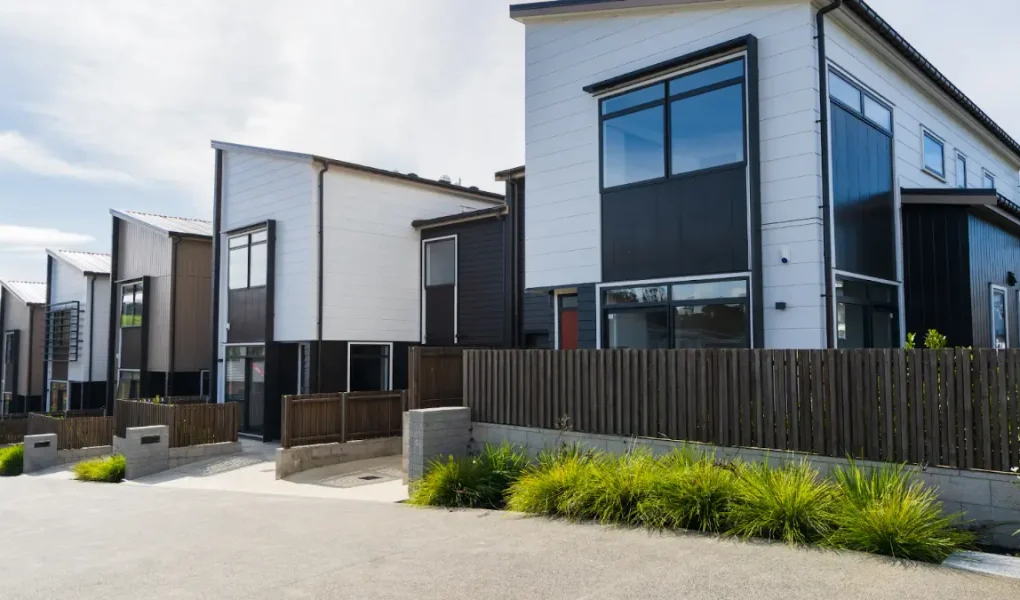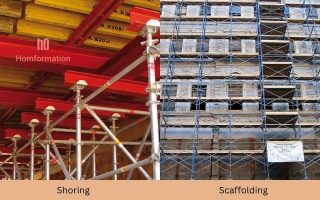Not all luxury properties are created equal, and if you’re thinking long-term, choosing the right one can transform your wealth strategy. In today’s market, it’s not just about marble floors and ocean views; it’s about smart investments that are appreciated while offering lifestyle perks. Some high-end properties quietly double in value while others stagnate despite the glamour.
So, how do savvy investors spot the winners before they make headlines? This isn’t just about buying prestige, it’s about unlocking potential.
Whether you’re watching a portfolio addition or your forever home, this blog will walk you through the critical factors that separate lasting value from flashy distractions. Ready to find a luxury property that works as hard as you do?
The Fundamentals of Luxury Property Investment
Before diving into specific properties, it’s essential to understand what truly constitutes a luxury investment. The definition varies widely depending on location, market conditions, and buyer expectations.
Defining Investment-Grade Luxury
Not all expensive properties qualify as investment-grade luxury real estate. True investment-grade properties combine prestigious addresses with timeless design elements and exceptional craftsmanship. These properties typically represent the top 10% of their respective markets and offer unique features that maintain desirability regardless of market fluctuations.
Key Metrics for Long-Term Value
When evaluating luxury property investment, focus on metrics that indicate lasting value. Look for properties with land-to-building ratios favoring the land component, as land for sale in premium locations typically appreciates faster than structures. Additionally, examine historical appreciation rates in the neighborhood, infrastructure improvements, and cultural significance of the area.
The Psychology Behind Market Resilience
Luxury markets demonstrate remarkable resilience during economic downturns because wealthy buyers are less affected by interest rate fluctuations. Understanding this psychology helps investors recognize why certain luxury properties maintain their value even during broader market corrections, making them ideal for long-term property gains.
The fundamentals provide a foundation, but location remains the single most critical factor in determining a property’s long-term appreciation potential.
Location: The Cornerstone of Appreciation
When choosing luxury real estate, location quality dramatically influences future value more than almost any other factor. Thoughtful location selection can mean the difference between modest returns and exceptional appreciation.
Prime Locations with Proven Track Records
The best luxury properties consistently cluster in established neighborhoods with historical prestige. Areas like Tribeca in New York, Mayfair in London, or Holmby Hills in Los Angeles have demonstrated consistent value appreciation through multiple market cycles. These locations maintain desirability due to limited supply, architectural significance, and cultural capital.
Emerging Luxury Markets
While established areas offer stability, emerging luxury markets can provide superior growth potential. Look for neighborhoods experiencing infrastructure improvements, increasing cultural amenities, and growing interest from wealthy buyers. These areas often signal the early stages of gentrification that precede significant price appreciation.
Micromarket Analysis
Even within prestigious neighborhoods, micromarket factors dramatically impact property values. Properties with waterfront access, unobstructed views, or proximity to cultural institutions typically outperform the broader neighborhood average.
When investing in luxury real estate, these premium positions within already desirable areas offer enhanced appreciation potential. After identifying promising locations, understanding the economic forces driving these markets becomes essential for making informed investment decisions.
Economic Indicators That Drive Luxury Growth
Economic conditions profoundly influence luxury real estate markets, separating temporary price bubbles from sustainable growth trends. Savvy investors closely monitor several key indicators before committing to a purchase.
Job Market Stability and Growth
Regions with diverse, high-paying employment opportunities consistently outperform areas dependent on single industries. Tech hubs like Austin, financial centers like Singapore, and diversified economies like London create sustainable demand for luxury property investment by attracting wealthy professionals who can afford premium housing.
Wealth Migration Patterns
Following the movement of wealth provides valuable insights into emerging luxury real estate hotspots. Regions experiencing net inflows of high-net-worth individuals typically see corresponding increases in luxury home values. Tax policies, lifestyle amenities, and political stability often drive these migration patterns.
International Investment Influence
Foreign investment can significantly impact local luxury markets, sometimes creating both opportunities and volatility. Understanding which markets attract international buyers helps investors anticipate demand fluctuations and potential regulatory changes that might affect property values.
Economic factors create the conditions for growth, but the intrinsic qualities of the property itself determine how well it captures that potential appreciation.
Architectural Excellence and Design Longevity
The physical attributes of luxury properties significantly influence their ability to maintain and increase value over time. Architectural significance can transform a mere house into a legacy investment.
Timeless Design Elements
Properties featuring classic architectural styles with proportional harmony and high-quality materials typically appreciate better than those following passing trends. Look for designs that have demonstrated enduring appeal across decades or even centuries, as these properties often become more valuable with age.
Contemporary Features with Staying Power
Modern luxury homes should incorporate contemporary conveniences without sacrificing timeless appeal. Open floor plans, abundant natural light, and indoor-outdoor living spaces have demonstrated lasting appeal across various market cycles and represent features unlikely to become dated.
Architectural Significance as Value Multiplier
Homes designed by renowned architects often command substantial premiums and appreciate faster than comparable properties. These signature designs frequently become more valuable as the architect’s reputation grows, creating a collectible quality that transcends typical real estate valuation methods. Beyond architecture, the amenities and features incorporated into a property can significantly enhance its long-term investment potential.
Premium Amenities That Enhance Returns
Not all luxury amenities contribute equally to long-term property appreciation. Discerning investors must distinguish between features that add enduring value and those that quickly become outdated or expensive to maintain.
Investment-Worthy vs. Depreciating Features
Focus on amenities with proven longevity and broad appeal. Wine cellars, home theaters, and spa-like bathrooms typically retain their desirability, while overly personalized features like themed rooms or ultra-specialized spaces often detract from resale value. Best luxury properties balance personal enjoyment with future marketability.
Community Amenities with Lasting Appeal
Properties within communities offering exceptional shared amenities often outperform standalone luxury homes. Private golf courses, marina access, and exclusive beach clubs create lifestyle value that supports property appreciation across entire neighborhoods.
Sustainability Features with Appreciation Potential
Energy-efficient systems, sustainable materials, and wellness-focused design elements increasingly command premium prices in luxury real estate markets. As environmental concerns grow, properties incorporating these features often experience enhanced appreciation compared to less sustainable counterparts.
This comparison table highlights key factors that influence the long-term appreciation potential of luxury properties:
|
Factor |
High Appreciation Potential |
Limited Appreciation Potential |
|
Location |
Established prestigious areas or emerging markets with infrastructure improvements |
Areas with declining populations or single-industry dependence |
|
Architecture |
Timeless design by renowned architects |
Highly trendy or overly personalized designs |
|
Construction |
Premium materials with superior craftsmanship |
Builder-grade materials with standard construction |
|
Amenities |
Timeless features like pools, wine cellars, and home gyms |
Dated technology or highly specialized rooms |
|
Views/Setting |
Waterfront, mountain, or protected vista properties |
Properties with compromised views or exposure to future development |
|
Exclusivity |
Limited supply with high barriers to entry |
Areas with continuous luxury development |
FAQs
1. What Factors Most Influence Luxury Property Appreciation?
Location quality remains the primary driver of long-term appreciation, followed by architectural significance and construction quality. Properties in supply-constrained markets with strong economic fundamentals typically outperform those in areas with extensive development potential, regardless of initial quality.
2. How Do Economic Cycles Affect Luxury Real Estate?
High-end properties generally experience less volatility than mid-market homes during economic downturns. While selling may take longer during recessions, luxury property investment typically maintains value better than many alternative investments, particularly in prime locations with limited inventory.
3. What Makes Multi-Generational Estate Properties Superior Investments?
Properties suitable for multi-generational living often command premium prices due to their versatility and long-term utility. These homes typically feature guest houses, multiple master suites, or separate wings that accommodate extended families—a growing priority for wealthy buyers seeking to consolidate assets and create legacy properties.
Final Thoughts on Building Wealth Through Luxury Real Estate
Choosing luxury real estate for long-term investment requires balancing analytical research with an intuitive understanding of what creates enduring appeal. The most successful investors look beyond immediate gratification to identify properties with the fundamental qualities that support appreciation across decades.
By focusing on location quality, architectural significance, and timeless amenities, investors can acquire luxury properties that not only provide exceptional living experiences but also deliver substantial long-term property gains.




